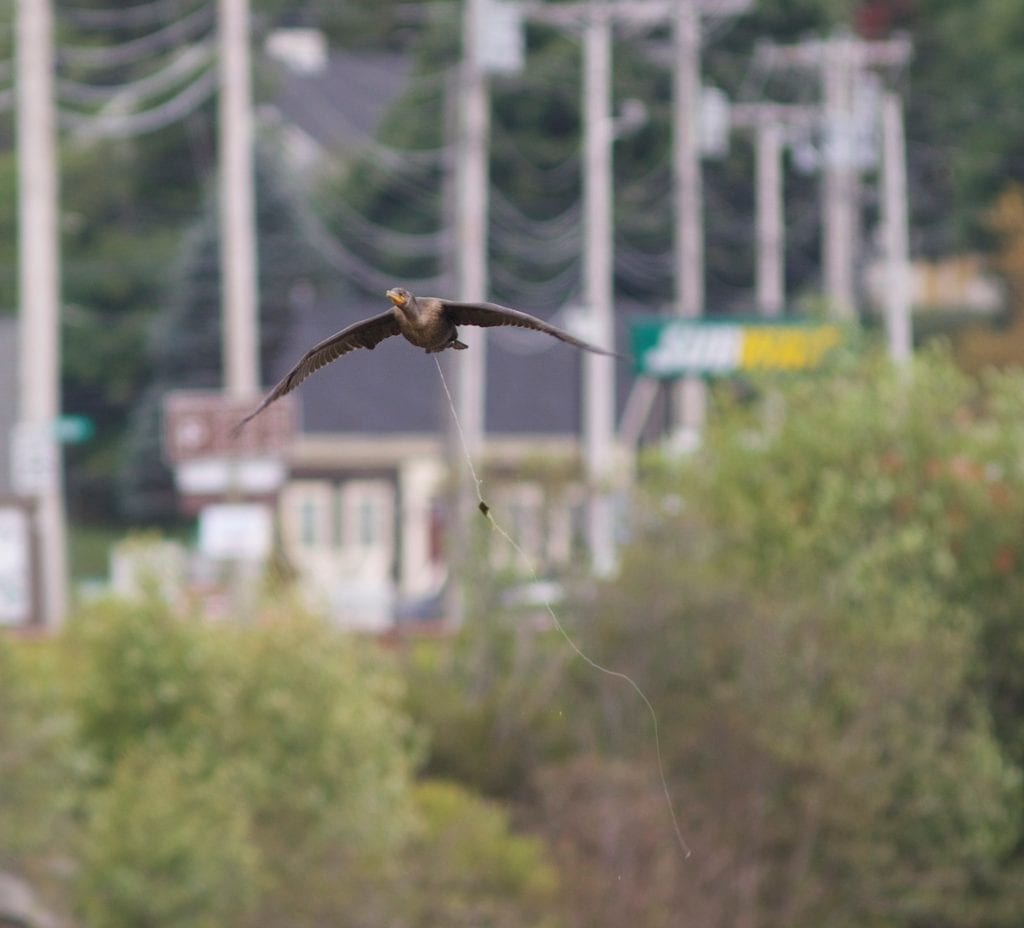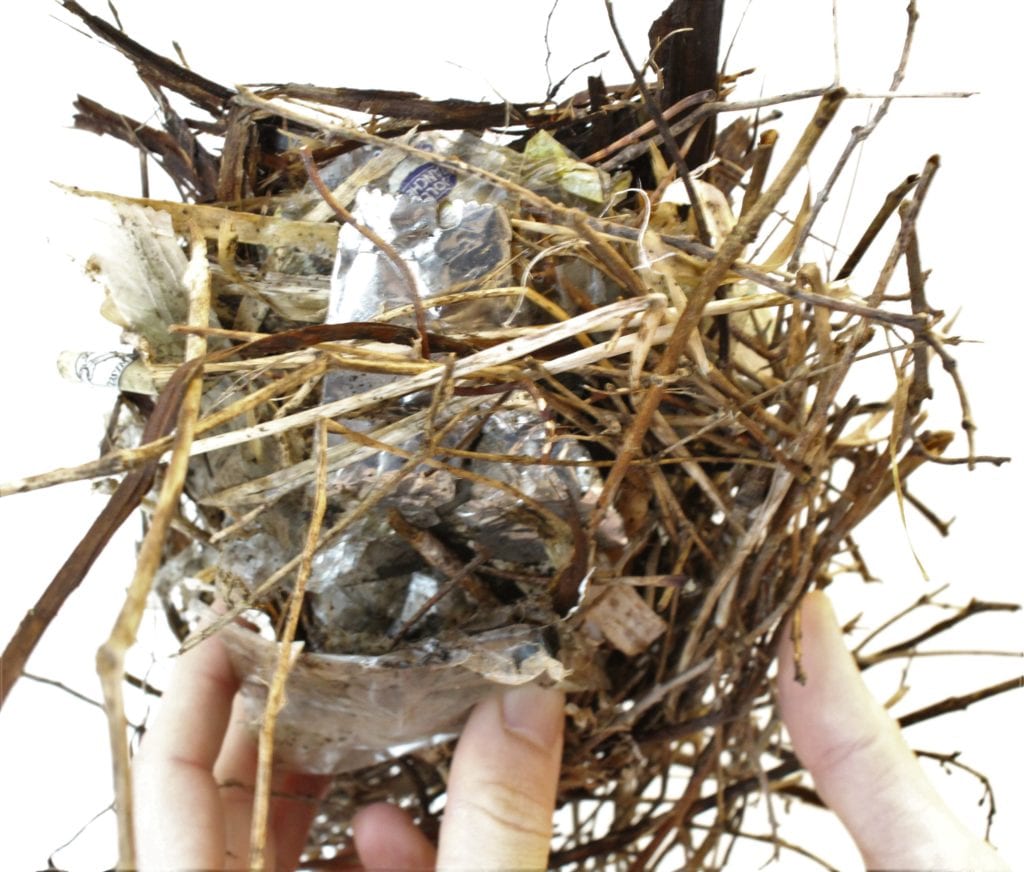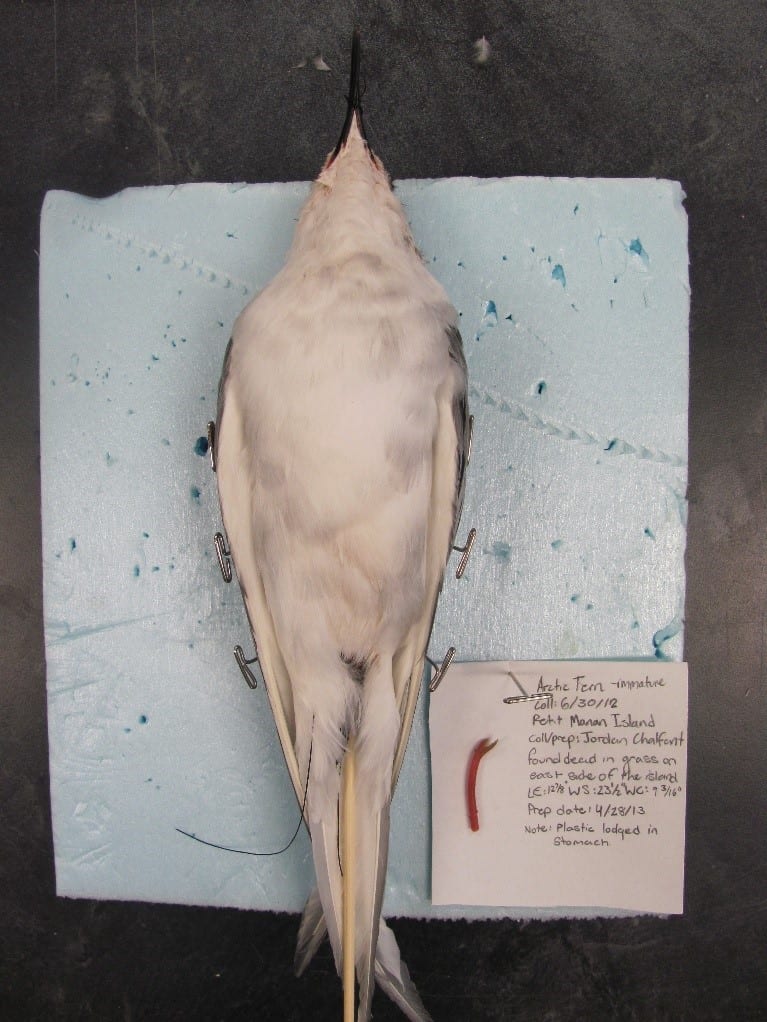
A Double-crested Cormorant swims through a long strand of discarded fishing line in Casco Bay, and becomes ensnared. The line wraps tightly around the bird’s legs and trails behind it in the water, making it difficult for the bird to chase fish underwater and causing it to go hungry.
A pair of Gray Catbirds look for materials to build a nest. In addition to twigs and grasses, the birds collect plastic candy wrappers and packing material and weave this material into the structure.
Arctic Terns undergo the longest migration of any bird species, from breeding grounds in the Gulf of Maine and further north all the way down to wintering range in the Antarctic Sea. One young bird hatched on Maine’s Petit Manan Island never had the chance to leave, and died after ingesting a piece of plastic.

These are just some of the thousands of Maine birds affected by plastic pollution each year. Worldwide, the statistics on plastic pollution are staggering. Ninety percent of seabirds ingest plastic, and the number is rising. Fragments of plastic are found throughout the world’s oceans, in concentrations up to 1.5 million pieces per square mile. By 2050, there is expected to be more plastic in the oceans than fish. And yet, the production of plastic is expected to increase by 40 percent over the next decade, despite just 9 percent of plastic being recycled.
Birds ingest plastic thinking it to be food, then starve when the plastic is indigestible and taking up space in their stomach. Plastic found inside birds includes bags, bottle caps, synthetic fibers from clothing, and “micro plastics”–plastic that has been broken down by the sun and waves over time. Birds and other wildlife also get caught or tangled in plastic — fishing nets, six-pack rings, plastic bags — and become injured or unable to feed. Additional impacts are still being understood by scientists, but the problem continues to grow.
The majority of study to date has focused on seabirds, which frequently pick floating plastic off the ocean surface and feed it to hungry chicks. Images of dead albatross chicks, their bellies decaying to reveal colorful piles of lighters and bottle caps, have shocked the world. However, scientists are just beginning to understand the impacts of plastic pollution on other species. New studies have found microplastics in the carcasses of American Oystercatchers, Red Phalaropes, and Common Eiders — all species found in Maine.

We need to take action if we want to protect Maine wildlife, and Maine Audubon is ready. We are working to pass a number of bills this legislative session to reduce plastic pollution and encourage recycling. Bills currently under consideration in the Maine legislature propose to support the continued success of Maine’s bottle redemption program; require bottle caps to be affixed to bottles; mandate the amount of recycled content in plastic bottles; ban the use of extruded polystyrene (i.e. “Styrofoam”) and plastic shopping bags; increase the penalties for littering; and more.
We will provide more information on specific bills as they move through the legislature, and encourage our members and readers to voice their support in order to help reduce plastic pollution. Together we can help save birds in Maine and around the world.
